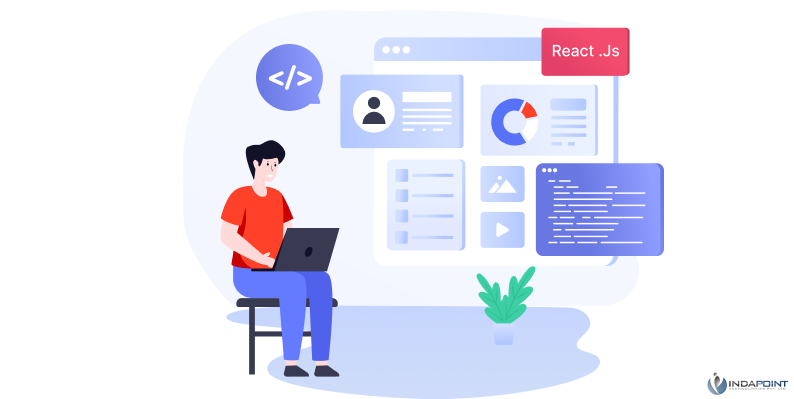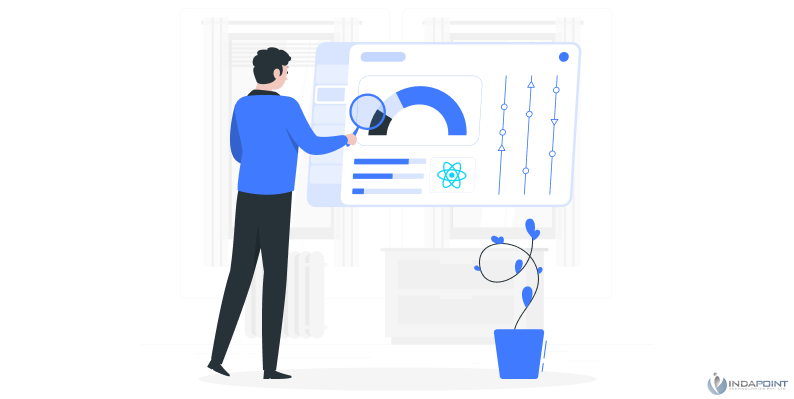Performance Profiling and Optimization in React.js Applications
November 1, 2023

Performance profiling and optimization in React.js are crucial for businesses to provide a seamless user experience. Performance profiling helps identify areas for improvement, while optimization methods like memoization, shouldComponentUpdate, and PureComponent can resolve bottlenecks. Real-world optimization can improve conversion rates and user experience. Continuous monitoring and optimization are essential for maintaining application efficacy. React.js is compared to other technologies like Angular and Vue, with React.js being preferred for larger applications with modularity. Making informed decisions about technology is crucial for business success.
Performance Profiling and Optimization in React.js Applications
A quick and responsive user interface can make or destroy a business in today’s digital age. As technology continues to advance, the efficacy of web applications has become a crucial factor for large and medium-sized businesses, as well as startups. React.js, a well-known JavaScript library for constructing user interfaces, is a popular option. To provide a seamless user experience, optimizing the efficacy of React.js applications is essential. In this guide, we will examine performance profiling and optimization in React.js, providing valuable information for technology decision-makers.
Why Performance in React.js Applications Is Important
Before delving into the specifics of performance profiling and optimization, it’s crucial to understand why performance is important in React.js applications. Your web application’s performance and responsiveness can directly influence user satisfaction, retention, and even revenue. In a world where users expect instantaneous responses, a slow interface can result in user frustration and the abandonment of shopping baskets or services.
Profiling Performance in React.js

Performance profiling is the analysis and measurement of your React.js application’s performance. Profiling assists in identifying areas of an application that can be optimized for greater performance and efficiency. There are numerous tools and techniques available for profiling React.js applications, including Chrome DevTools and React DevTools, which are popular options.
Identification of Performance Limitations
Several common performance bottlenecks can delay the user interface in React.js applications. An example of this is excessive component re-rendering. When components are updated more frequently than necessary, performance may suffer. Identifying these bottlenecks is the initial stage in application optimization.
Optimization Methods

React.js developers can use a variety of optimization strategies to resolve performance bottlenecks. Methods such as memoization, shouldComponentUpdate, and PureComponent prevent superfluous re-renders. In addition, techniques such as lazy loading, code separation, and server-side rendering can improve performance further.
Continuous Monitoring and Optimisation
Optimizing the performance of React.js is not a one-time endeavor. Continuous monitoring is required to maintain the efficacy of your application. Tools such as Lighthouse and Web Vitals can assist in monitoring performance metrics. In addition, A/B testing is a useful method for measuring the effect of optimizations on user engagement and conversion rates.
React.js Compared to Other Technologies
When making technological decisions, it is crucial to consider all available options. Although React.js is a prominent option, it is not the only one. To help you make informed judgments, let’s compare the performance of React.js to that of comparable technologies such as Angular and Vue. Comparing React.js and Angular: React.js is renowned for its rapid rendering performance, making it an excellent option for web applications requiring high user interaction. Angular may have a steeper learning curve and be overkill for simpler projects, despite its potential.
React.js versus Vue
Vue.js also provides exceptional performance, and its simplicity and integration ease make it suitable for smaller projects. React.js may be preferred for larger applications where modularity is essential.
The conclusion
In conclusion, optimizing the efficacy of React.js applications is essential for providing an exceptional user experience. By understanding performance profiling, identifying bottlenecks, and employing optimization techniques, businesses can guarantee that their applications remain responsive and quick. Continuous monitoring and comparative analysis of React.js with other technologies are indispensable for making informed technological decisions.
Remember that making well-informed judgments regarding technology is crucial to the success of your business. If you have specific technological needs or require expert advice.Our team of seasoned professionals can assist you in selecting the most effective technological solutions and equip you with the knowledge you need to excel in the digital landscape.





